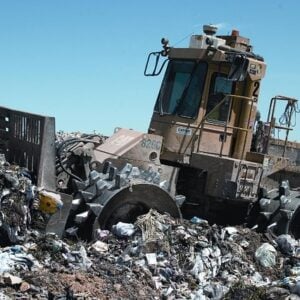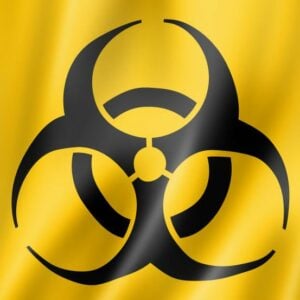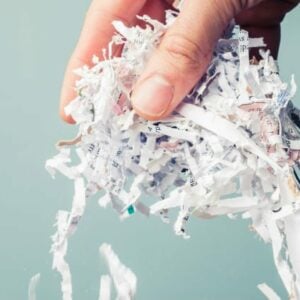
Alarming Dangers In Australia: Lithium-ion Battery Fires 🔋
Lithium-ion Battery Fire 🔋: If you have read or watched the recent news, you would know the alarming number of fires caused by lithium-ion batteries in Australia. Colour us here at Waster surprised when we learned that this type of battery caused more than a thousand fire incidents in the country. Naturally, we will cover everything you should know about the dangers of lithium-ion batteries – their tendency to start dangerous fire incidents and how we can move to avoid these from happening in the future.
Lithium-ion batteries, for quite some time already, have dominated the battery market due to their high energy density, rechargeability and low self-discharge rate.
They are versatile, fitting various applications from consumer electronics to renewable energy storage systems and electric vehicles. With no memory effect and high performance, they offer convenience and reliability.
Technological advancements have strived to improve their safety, lifespan and overall efficiency, reinforcing their widespread use across industries. However, on the safety front, there are glaring obstacles.
Incidents of thermal runaway, wherein batteries overheat and catch fire, persist despite technological advancements. Efforts to enhance safety features face challenges, while disposal and recycling issues remain unresolved, raising environmental concerns.
In Australia, we have experienced countless incidents of lithium-ion battery fire incidents that caused massive destruction to its surrounding areas.
>Download Now: Free PDF Business Owners Guide To Commingled Recycling Bin Services
Some lithium-ion battery fire news
ABC News has recently reported that the battery has caused well over a thousand fires during the past year (2023) in Australia. A common culprit of the fire incidents dating back to last year is the cigarette alternative, improperly disposed of vape, which was mentioned by the workers in recycling plants, fearing for their safety as they are surrounded by their damaged and exposed batteries.
In other incidents, The Guardian reported four fires in one day in NSW with the same main culprit: lithium-ion batteries.
According to the report, a man was sent to the hospital, and a 10-story apartment building was emptied after an electric bike battery exploded in Bankstown, Sydney. Additionally, firefighters put out blazing fires from an electric car charging spot in Berkeley, a gardening tool in Lake Macquarie and a loose battery in a rubbish truck in Silverwater.
Above, we only listed two examples. Believe us when we tell you that there are a lot more fire incidents involving lithium-ion batteries, not just in Australia, but in the whole world.
Now, the main question is: why have there been so many lithium-ion battery fire incidents?
What makes lithium-ion batteries prone to lighting up and causing a dangerous blaze? And what can we do to, at the very least, lessen these incidents from happening? Let us cover the topic a bit more below.
Lithium-ion battery fire: everything you need to know
The increase in lithium-ion battery fire incidents here in Australia can be attributed to a multitude of reasons. We state them down below.
Firstly, the surge in usage of devices like electric vehicles, mobile smartphones and other portable electronics has led to a substantial increase in the number of lithium-ion batteries in circulation, thus heightening the likelihood of incidents.
Secondly, despite technological advancements, manufacturing defects can still occur, resulting in batteries that are more prone to failure or thermal runaway. Moreover, inadequate handling or storage practices, such as exposing batteries to extreme temperatures or physical damage, can significantly elevate the risk of fires.
Additionally, overcharging or using incompatible chargers can cause batteries to overheat and potentially ignite. As lithium-ion batteries age, their internal components degrade, amplifying the risk of failure and fire.
The growing number of counterfeit or substandard lithium-ion batteries further aggravates the issue (i.e., increases the chance of fire incidents happening), as these products often lack the safety features of genuine batteries. Lastly, a lack of awareness among users regarding proper battery care and safety practices can exacerbate the risk of incidents.
Therefore, addressing these multifaceted challenges requires a comprehensive approach encompassing improved manufacturing processes, enhanced user education and stricter regulations to ensure the safe usage and handling of lithium-ion batteries.
Some guidelines on how to use items powered by lithium-ion batteries safely
It is nearly impossible to not use items powered by lithium-ion batteries. Many products, specifically technological devices, operate with this type of battery. So, the best thing to keep ourselves safe is to learn their correct usage.
To use items powered by lithium-ion batteries safely and minimise the risk of fire, follow these guidelines:
- Use Genuine Batteries: Always use genuine, manufacturer-approved lithium-ion batteries for your devices. Avoid purchasing counterfeit or low-quality batteries, as they may lack proper safety features.
- Proper Charging: Use only the charger provided by the manufacturer or a compatible charger specifically designed for your device. Avoid overcharging batteries, and unplug them once fully charged to prevent overheating.
- Avoid Extreme Temperatures: Keep any items powered by a lithium-ion battery away from extreme temperatures, both hot and cold to avoid the risk of fire. Avoid exposing them to direct sunlight, heaters or freezing temperatures, as this can affect their performance and increase the risk of fire.
- Handle with Care: Avoid dropping, crushing, or puncturing lithium-ion batteries, as physical damage can lead to internal short circuits and thermal runaway. Handle them gently and store them in a secure, protective case when not in use.
More guidelines
- Monitor for Signs of Damage: Regularly inspect lithium-ion batteries and devices for signs of damage, such as swelling, leakage or unusual odours to avoid dangerous fire incidents. If you notice any abnormalities, stop using the device immediately and replace the battery.
- Follow Manufacturer Guidelines: Adhere to the manufacturer’s instructions and guidelines for the proper use, charging and storage of items powered by lithium-ion battery-powered to avoid starting a fire. This includes recommended charging times, storage temperatures and maintenance procedures.
- Store Safely: Store lithium-ion batteries and devices in a cool, dry place away from flammable materials and sources of heat. Avoid storing them in confined spaces or areas with poor ventilation.
- Dispose of Properly: When disposing of lithium-ion batteries, follow local regulations and guidelines for safe disposal. Many communities have designated recycling centres or drop-off locations for old batteries to prevent environmental contamination.
By following these safety measures and exercising caution when using lithium-ion battery-powered items, you can reduce the risk of fire and ensure the safe operation of your devices.
Contact Waster right now for your waste and recycling needs now!
Does your Australian-based business need waste and recycling services? If so, then you have come to the right place!
Please call 1300 WASTER (1300 927 837). You can also email us at info@waster.com.au or enquiries@waster.com.au if you have further questions. Find the best deals in terms of waste and recycling pricing and services!
Leave a Reply Cancel reply

Product categories
Most Popular Posts
-
Commercial Waste Management Services: Reduce Waste Collection Costs! 🚍
-
Medical Waste Disposal: Everything You Need To Find Out In 2024! 💉
-
Rubbish Removal Sydney 2024: Better Bin Collections For Business ✅
-
Clinical Waste Disposal 2024: What To Know About Business Clinical Waste ⚕️
-
Secure Document Destruction 2024: All About Security Bins Shredding 🔒
-
Free Cardboard Recycling 2024: Can I Get Free Cardboard Collection? 📦
-
Confidential Paper Disposal Bins 2024: What You Need To Know About Shredding! 🔒
-
Recycling Bins Australia 2024: Recycling Can Boost Your Profits! ♲
-
Commercial Wheelie Bin Collection: What Businesses Need To Know In 2024 🗑️
-
Commingled Recycling 2024: Why Commingled Bin Is Key To Recycling 🍾













